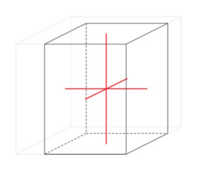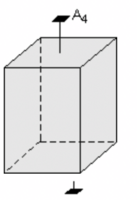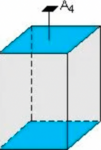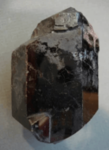Like the cubic system, the tetragonal system has three axes that all meet at 90 degrees. It differs from the isometric system in that the C axis is longer than the A and B axis which are the same length. This makes it’s for a rectangular prism. It is important to note that the tetragonal system will have a square base and top, but its height will be longer than the axes which make the square base/top.

The crystallographic axes of a tetragonal crystal lattice.

Prisms have a set of faces that run parallel to an axis of a crystal, yet never converge with it. The tetragonal prism is composed of 4 faces which are parallel to a 4-fold rotation axis.

A pinacoid is composed of only two parallel faces. In this case, the top and bottom face are the pinacoid forms (the blue faces).

Tetragonal Dipyramid: An 8-faced form about a 4-fold rotation axis. The dipyramid can be seen on the image below on the upper portion and lower portion of the figure. Both ends begin to come together to form a pyramid-like shape. It also shows the Pinacoids in the form; the two parallel horizontal faces.

Rutile specimen, showing the forms of tetragonal prism, dipyramid and 2 prisms.